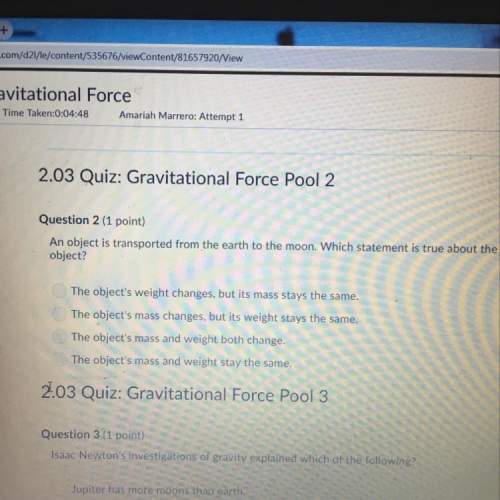
Chemistry, 16.04.2021 22:10 esheagustafson
Hi! We did an experiment where we should determent ΔH of Mg per mol.
Mg(s) + 2HCI (aq) → MgCl2 (aq)+ H2 (g)
1. qHCl=CmΔT.
MHCl=26,56 gram
ΔT= 31,1 C
CH2O= 4,2 J/ (g · K)
qHCl=4,2 J/ (g · K) x 26,56gram x 31,1 C
qHCl= 3469,2672 J/mol
MMg= 24,3 gram/mol
mMg= 0,36 gram
nMg= mMg/Mmg
nmg= 0,36 gram/ 24,3 gram/mol
nmg= 0,0148148148 mol
nmg= 0,0148148148 mol
qHCl=3469,2672 J/mol
ΔH= 3469,2672 J/mol/ 0,0148148148 mol
ΔHHCl= 234175,5362 J/mol
ΔHMg= - ΔHHCl
ΔHMg= - 234175,5362 J/mol
This is my calculations how ever I want to compare it to the real value by using this equation. Have I made it right? I want to know the ΔHMg.
∆Hº(reaktion) = ∆Hºn(produkter) - ∆Hºn(reaktanter)
Produkter
Mg= -462.0 kj
Cl= -167.2
MgCl2 (aq)= -462.0 + (-167.2 x 2) = -796.6 kJ/mol
Reaktanter
HCl (aq) = -167.4 kJ/mol
2HCl= -167.4 kJ/mol x 2 = 334,8
∆Hº(reaktion) = (-796.8 kJ/mol + 0) - (0 + -167.4 kJ/mol x 2)
∆Hº(reaktion) = -462 kJ/mol
Is it the ∆H for the whole reaktions per mol or is it for mg? I get so confused!

Answers: 3


Another question on Chemistry


Chemistry, 22.06.2019 20:00
Many free radicals combine to form molecules that do not contain any unpaired electrons. the driving force for the radical–radical combination reaction is the formation of a new electron‑pair bond. consider the chemical equation. n(g)+no(g)⟶nno(g) n(g)+no(g)⟶nno(g) write lewis formulas for the reactant and product species in the chemical equation. include nonbonding electrons. n(g)n(g) select draw rings more erase select draw rings more erase select draw rings more erase n no(g)
Answers: 1

Chemistry, 22.06.2019 22:30
Amedication is given at a dosage of 3.000 mg of medication per kg of body weight. if 0.1500 g of medication is given, then what was the patient's weight in pounds (lbs)? there are 453.59g in 1 lb.
Answers: 2

Chemistry, 23.06.2019 01:30
Astudent states that 9.0 g of baking soda will form an unsaturated solution in 100 g of water. what do you need to know to decide whether this statement is correct? a. the temperature of the water and the molar mass of baking soda b. the percent by volume of the solution and the solubility of baking soda c. the temperature of the water and the solubility of baking soda at that temperature
Answers: 1
You know the right answer?
Hi! We did an experiment where we should determent ΔH of Mg per mol.
Mg(s) + 2HCI (aq) → MgCl2 (aq)...
Questions


Mathematics, 21.09.2020 14:01


History, 21.09.2020 14:01


Social Studies, 21.09.2020 14:01

Mathematics, 21.09.2020 14:01




Geography, 21.09.2020 14:01



History, 21.09.2020 14:01

Health, 21.09.2020 14:01









